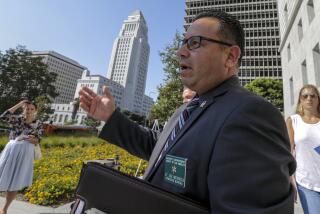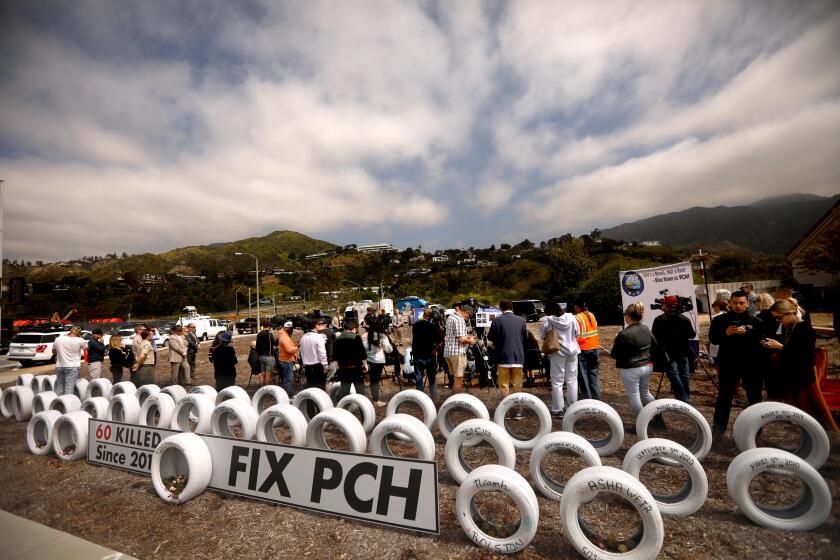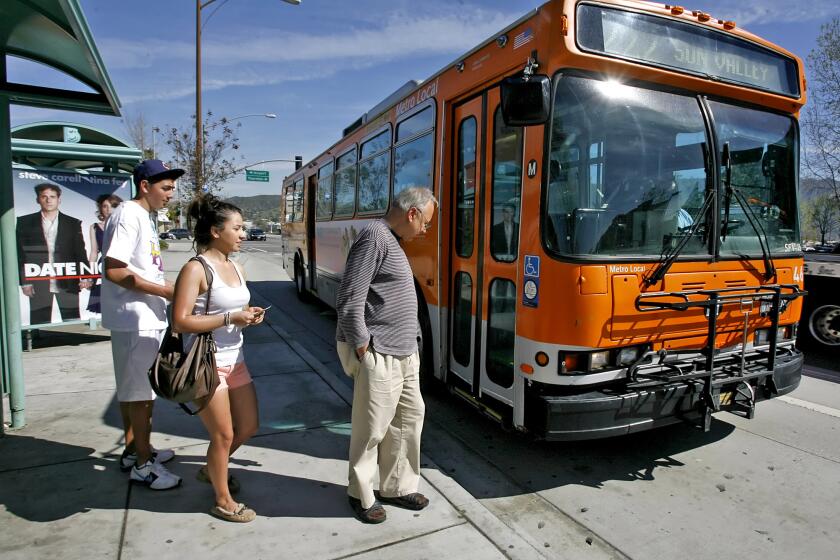OCTA Board Requests Study of Carpool Lanes
More than a decade after launching the state’s largest network of carpool lanes, Orange County’s top transportation leaders on Monday called for a one-year study to determine if the lanes actually work.
The board of the Orange County Transportation Authority set aside a staff recommendation to embrace the Garden Grove Freeway project--the final unfinished segment in the state’s premier system of diamond lanes--and unanimously called for a study of how the lanes affect congestion.
“We’ve made a huge investment, but now it’s time to take a timeout,” said Supervisor Todd Spitzer, who pushed for the study. “We lack concrete, empirical data that would suggest HOV lanes are successful.”
Monday’s vote does not cancel or delay the proposed addition of high-occupancy-vehicle (HOV) lanes to the busy east-west freeway. But it does force planners to include a proposal for adding regular lanes instead of the exclusive carpool lanes.
Orange County has more miles of HOV lanes than any other California county, but local studies of commuter habits show drivers use those lanes less than their counterparts in other major counties.
Nationwide, use of carpool lanes has sagged in recent years, and, as freeways fill up, there is increasing debate about the benefits of the special lanes.
Spitzer’s call for a review comes on the heels of a push by Assemblyman Tom McClintock (R-Northridge) to have a statewide evaluation of carpool lanes. Recent letters from two of Orange County’s state legislators also criticize the HOV plan for the Garden Grove Freeway.
“The use of the HOV lanes is not keeping up with population growth,” said Hasan Ikhrata, transportation planning manager for the Southern California Assn. of Governments. “We have questioned the performance of the HOV system.”
For Orange County, adding an HOV lane to the overtaxed Garden Grove Freeway would be the last component in a latticework of carpool lanes that would include every freeway. Completing that countywide system would create lengthy, uninterrupted carpool opportunities that might entice more commuters to double up, said Dave Elbaum, OCTA planning director.
Adding a lane of any kind to the Garden Grove Freeway would cost about $212 million, but that price tag could jump an additional $150 million if direct HOV connectors were built to diamond lanes on other arteries, such as the Santa Ana Freeway.
The project is opposed by both state Sen. Rob Hurtt (R-Garden Grove) and Assemblyman Dick Ackerman (R-Fullerton), who each sent letters to OCTA urging that other options be considered for relieving traffic woes on the freeway, which stretches from Long Beach to Orange.
“The HOV lanes have not accomplished their fundamental objective, namely to motivate car-pooling,” Hurtt wrote in a July 29 letter. The lawmaker went on to criticize carpool lanes for creating more traffic in other lanes and increasing accidents on two local freeways.
Supervisor Charles V. Smith, an OCTA board member, said that while the county’s HOV system “is working, the jury is still out” on the overall value of carpool lanes. But, he added, in the case of the Garden Grove Freeway, HOV lanes would be the most effective way to thin out gridlock and make a dramatic difference in capacity.
Smith, whose district straddles the freeway, said that the thoroughfare is troubled primarily because of bad transitions to major north-south arteries, and that HOV lanes with direct transitions to those freeways is the most practical way to ease the flow.
“There are all these choke points,” Smith said. “If you just add a lane without [improving the interchanges], you are just widening the parking lot.”
Smith said he joined the unanimous vote to include a general use lane in the study because he “didn’t have the votes” to move forward with just an HOV lane study. He said the larger discussion about the overall value of HOV lanes was “philosophical and a little off-point.”
The board also voted Monday to call on the Southern California Assn. of Governments to perform a comprehensive study on the role and success of HOV lanes countywide and beyond.
For Spitzer, the bottom line in the debate is congestion. He said the desire to complete the county’s system of diamond lanes should take a back seat to gridlock worries.
He said he would “junk” the entire carpool system if an extra regular lane would alleviate congestion.
“The 22 Freeway is a nightmare,” Spitzer said. “We’ve got to fix the problem.”
More to Read
Start your day right
Sign up for Essential California for news, features and recommendations from the L.A. Times and beyond in your inbox six days a week.
You may occasionally receive promotional content from the Los Angeles Times.






